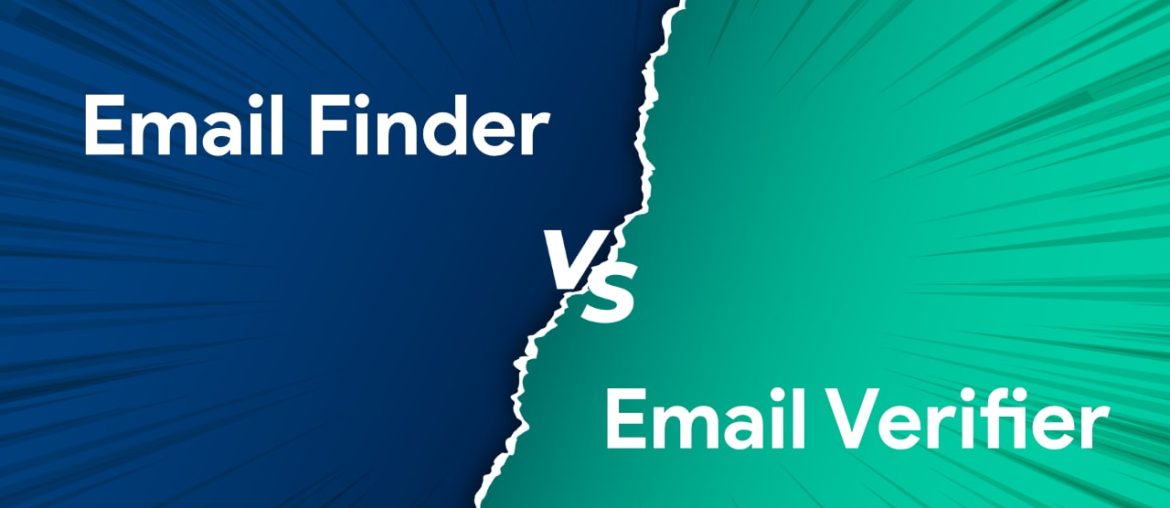Today, we focus on two very useful tools that are often confused: the email finder and the email verifier. At first glance, “finding an address” and “verifying an address” seem like two facets of the same process, but in reality, their functions, uses, and impacts are quite different. We explain in the following lines.
Defining the two realms: finding and verifying
The email finder: when you don’t have the address
The email finder (or “email lookup”) allows you to find a person’s email from known elements (first name, last name, company, domain, sometimes position or location). It relies on databases, pattern combination algorithms (such as firstname.lastname@, f.lastname@, etc.), and public sources (social networks, corporate websites, forums).
Typically, the email finder is used for cold outreach and building B2B lists when you have a name and a domain but not the email address.
The email verifier: when you already have the address
As its name suggests, the email verifier checks one or more addresses to determine if they are valid, active, and capable of receiving messages. Essentially, it ensures that the message is sent to a real recipient.
To analyze the email and determine if it’s usable, the tool in question follows several steps:
- Format and syntax verification: it ensures the address has the correct structure and is well-written (for example, checking for errors like “name@company” without the “.com”, or “name@copany.com”).
- Domain check: it checks that the domain name (e.g., “company.com”) exists and is capable of receiving emails.
- Mail server testing: without sending an actual message, the verification tool queries the server to ensure the inbox is still active.
- Risky contact detection: it identifies addresses known to cause issues, particularly those used as spam traps or listed on blacklists.
- Handling catch-all emails: some domains accept all emails, even those that do not exist. The tool flags these cases as “uncertain”.
Note that some tools now combine both functions: they allow you to find an address and automatically verify its validity in one go. This simplifies the prospecting task while minimizing the risk of error or bounce.
Main differences between an email finder and an email verifier
The starting point
The email finder starts from partial information like a first name, last name, or company domain.
The email verifier, on the other hand, starts with an already existing email.
The main objective
The email finder’s goal is to retrieve an electronic address to contact a specific person.
The email verifier is used to check the validity and deliverability of an email.
Cost positioning
Finding tools often charge per search (per lead or per contact).
Verification tools generally charge per email analyzed, in volume or batch.
The time of use in the marketing cycle
The finder is used upstream, during collection or prospecting.
The verifier is used before sending to clean and ensure the reliability of the database.
Why this distinction matters
Deliverability and reputation concerns
Sending an email to an invalid contact or a spam trap directly harms your sender reputation: the message bounces, might be marked as spam, and degrade your overall performance.
Conversely, a research tool (email finder) that returns an incorrect address has no immediate effect. But if it is not verified before sending, it will eventually cause a bounce and negatively impact your domain’s reputation.
Cost considerations
Those who send mass campaigns pay per useful email. Wasting sending credits on dead addresses is essentially throwing money out the window. Using an email verifier before sending is clearly a cost-effective investment.
Compliance concerns
When acquiring contacts, one must respect consent, processing legitimacy, access and deletion rights, etc. The GDPR requires that data be “accurate and up-to-date”.
Practical scenarios
Here are two common scenarios to understand how to optimally combine finder and verifier:
1) Cold prospecting (B2B)
- You have a list of prospects (name, position, company).
- You use an email finder to obtain their addresses.
- Once the addresses are obtained, you immediately launch an email verifier for a thorough check.
- You segment the results: validated addresses are used for campaigns, risky ones need monitoring, and invalid ones are deleted.
2) Enrichment of an existing database
- You already have a list of emails, but it is somewhat outdated.
- You verify the entire list in one automated operation.
- You delete the invalid addresses.
- For missing addresses (empty email field with only the name and company, for example), you use the finder occasionally, then verify these latest additions.
Finder and verifier: a difference that matters
The distinction between an email finder and an email verifier is subtle but no less important. One is a prospecting and collection tool, the other an instrument of quality and security. By working them together, you improve the quality of your mailings, enhance the reliability of your campaigns, and preserve the credibility of your sending domain.







